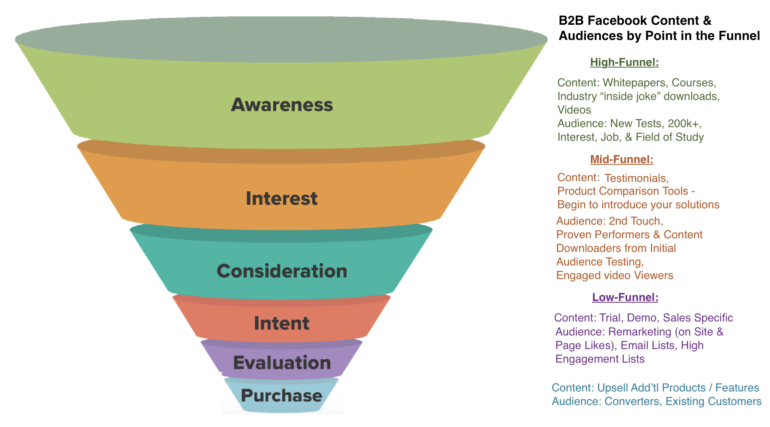According to the State of Paid Social survey, 30% of respondents struggle with manpower when trying to succeed in the social realm.
- Social ads require consistent A/B testing & ad rotation to avoid “ad fatigue”
- Tailoring audiences and segmenting them further in response to results and data takes work
- Proper budget allocation is needed
- Monitoring snarky comments & answering questions that may pop up in ad comments is a concern. Depending on your business, however, comments may be sparse. Among the accounts that Hanapin manages, we tend to see much more comment engagement in e-commerce client Facebook ads as opposed to those in the B2B niches.
- All of the above can be resolved by using an outside agency and/or well trained in-house employee to monitor performance and optimize ads. Assess how much you’re willing to spend on account services when you take your ROAS goals into account.
Reason 2: Content Creation
28% of marketers who took our State of Paid Social survey said that content creation prevents them from succeeding in the social realm.

- When marketing in B2B, it’s difficult to not veer into dry, boring content that doesn’t seem suitable for the fun, casual nature of a Facebook newsfeed. After all, your well crafted industry-specific post may seem jarring when placed next to this gif of a baby kissing a doggie. But allow me to quell your fears: Remember that your prospects are human beings, and maybe they do enjoy puppy gifs and fail videos, in addition to being well seasoned and discerning business people. Much like the Google Display Network, a $25,000 sale from a TMZ banner ad is still a strong sale, regardless of how much Susan the Product Manager likes to look at photos of Beyonce’s baby twins.
- It’s important to note that you don’t need a large amount of content to succeed on Facebook. A few very high-quality pieces can make all the difference. Focus on quality above quantity.
- Identify your ideal customer through persona analysis when crafting content. Services like HubSpot & Marketo are great at helping you shape content to attract desirable leads. Or, you may have personas drawn up from other advertising efforts or for internal use in your sales department.
- The quality content that Facebook B2B audiences seek include:
- Educational content such as courses, whitepapers, and videos.
- Testimonials, webinars, case studies, and industry studies
- Content must speak to your prospect’s pain points and satisfy their hunger for guidance. What’s changing in your industry? Where might a professional feel gaps in knowledge or need help making vendor decisions? Make sure the content speaks to their concerns and avoids exulting the quality of your company until the audience grows to recognize your brand.
Reason 3: The Nature Of Facebook Audiences
- There are two main worries I consistently hear from B2B clients about Facebook audiences:
- “The users on Facebook are just a bunch of kids.” It’s true that Facebook started as a college student haven, but it’s not that way anymore. 68% of all US adults are on Facebook, and a wide variety of adults access the platform regularly. 62%-72% of all 50-65-year-old online adults use Facebook, according to the Pew research in our top social media demographic strategy tips for 2017.
- “Facebook users just aren’t in the mood to buy.” It may be true that businesspeople aren’t thinking of their professional needs as they RSVP to their neighbor’s potluck on Facebook, but consider the remarketing and lead list building opportunities for when the user has the time to consider your solutions. Every business wants to bring a well-qualified audience into their funnel or onto their email list, and Facebook is ideal for this soft sell purpose.
I like to say that social ads are like buying a coffee for someone you admire. The trick is to stick with coffee or a cookie. Don’t propose marriage to your Facebook audience (a trial, demo, sales contact, or purchase) when you’ve only just met. Wait to establish a relationship with your audience before moving in that direction through remarketing & email list targeting. This is where layering your audience is key. Bring the right message to the right user at the right time. Social ads play the long game of achieving brand recognition and engagement very high in the funnel.

Assembling Your Facebook Ad Content
Your Facebook ad content should align with the steps of your funnel, as shown above.
A good example of this is in the case of Varonis, a data security platform. Their goal was to reach system administrators with a low-pressure brand introduction that would loop them into their email list. We used their fun, lighthearted content to reach those IT professionals. The “Cards Against IT” deck expansion pack in a downloadable PDF is specific to the audience we are pursuing (almost to the point where it’s an insider, industry joke) and we ran the content with the correct aim – to build a prospect list over the long term, and not to sell the audience outright:

This content has brought in loads of potential future prospects and employees, at an extremely low cost per lead. We also used Facebook lead ads to cut out the need for landing page load times and streamline the mobile experience. Leads were dropped directly into Varonis’s HubSpot account.
Simply engaging the audience with your brand is a great first goal to keep in mind when designing content. And then as your prospect wanders down the funnel, content must become more specific and match the characteristics and behavior of the audience. Move along from pushing the audience into your pipeline via content downloads, to attending a demo or webinar, to actually making the decision to buy your product. You should never take an audience that doesn’t understand your brand and force them to make a decision when they don’t have enough information. In B2B as we all know, the funnel is long and the process is gradual. Break out your content to reflect the plodding process of introducing yourself to your audience with helpful tools and information, and then following up with more company specific, solutions based content.
Another great example (one I’ve experienced myself) is from Moz, the SEO software company. The first Moz ad I was served on Facebook led me to a friendly video about SEO best practices. The landing page was fun and informational:

Moz processed the information that I had clicked on their ad and engaged with their video content. So bearing this in mind, they stepped up their content the next time I was browsing Facebook to focus more specifically on what they have to offer a marketer like me. Their content correctly assumes I already have interest in SEO best practices as I get to know the brand. Moz also does a great job of speaking professionally but keeping their content fresh and friendly, without talking down to their audience:

Items To Keep In Mind When Designing Facebook Ad Content:
- Unlike organic social strategy that promotes blog posts, industry news, and press releases, social advertising requires only a few high-quality pieces of content.
- For your social content, put yourself in the shoes of your prospects and pay close attention to the Facebook advertising you receive as a professional.
- Don’t be too negative or threatening, speak of the benefits
- If your audience has a boss, highlight how your advice or product will make them the hero, solve a problem, gain recognition or move up in their organization
- Don’t talk about yourself too much when introducing your company to new audiences (and exclude audiences that like your page when targeting these fresh prospects.)
- Run more aggressive offers to audiences that are already familiar with your brand
- B2B doesn’t have to be bland
- Don’t talk down to seasoned professionals
- Have a brand voice
- Engage with charm
When using Facebook ads in the business to business world, the approach is quite different from consumer ads due to the already knowledgeable audience. But the results on Facebook can be stellar if you properly map your audiences and tailor your content to speak to each prospect group with the right message at the right time, based on their existing familiarity or interest with your brand.